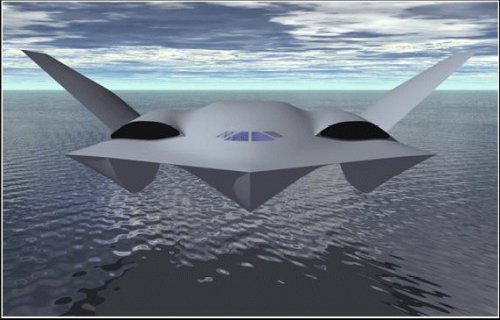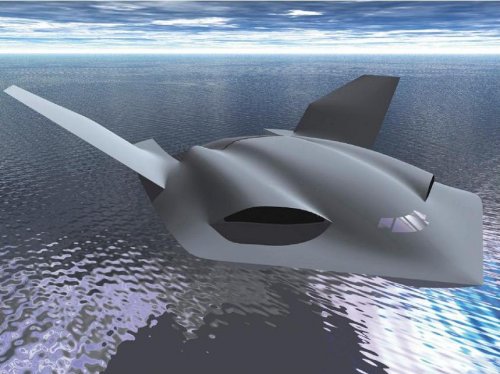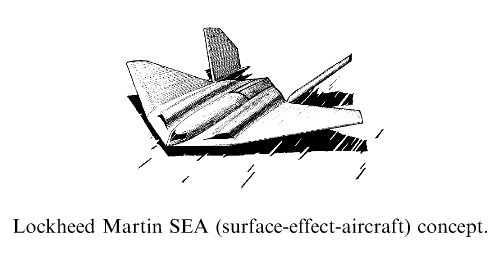- Joined
- 1 April 2006
- Messages
- 11,397
- Reaction score
- 10,314
"Another design that some analysts feel may have merit is Lockheed Martin’s Surface Effect Aircraft (SEA). It is primarily a seaplane, but uses two technologies to enhance its capabilities. The concept uses wing-inground effect technology, as well as, surface effect ship principles. The WIG technology would assist in increasing its range capability by approximately 25% if utilized. The surface effect ship technology would assist in getting the vehicle out of the water faster, thus shortening the takeoff distance and lessening propulsion requirements. Another innovation for the SEA is a modular concept. The designers believe that different modules could be sed depending on the type of mission. The two different examples used were a Conventional Air-Launched Cruise Missile/Unmanned Aerial Vehicle Launcher Module and a Cargo Module. The SEA is designed to carry the same payload as a C-5, about 270,000 pounds, with a range of 7,500 to 10,000 nautical miles depending on whether it is operating in or out of surface effect. It has an operational goal of 300 - 400 knots at less than 200 feet, but can also fly at normal deployment altitudes. Lockheed Martin also believes that the design may have potential for signature reduction, or “stealth”. Critics of the seaplane have said that they require more propulsion than similarly sized conventional aircraft to takeoff. There was also a concern in the takeoff and landing phase due to floating debris.
Timeframe of project is 2003-2005
Timeframe of project is 2003-2005



